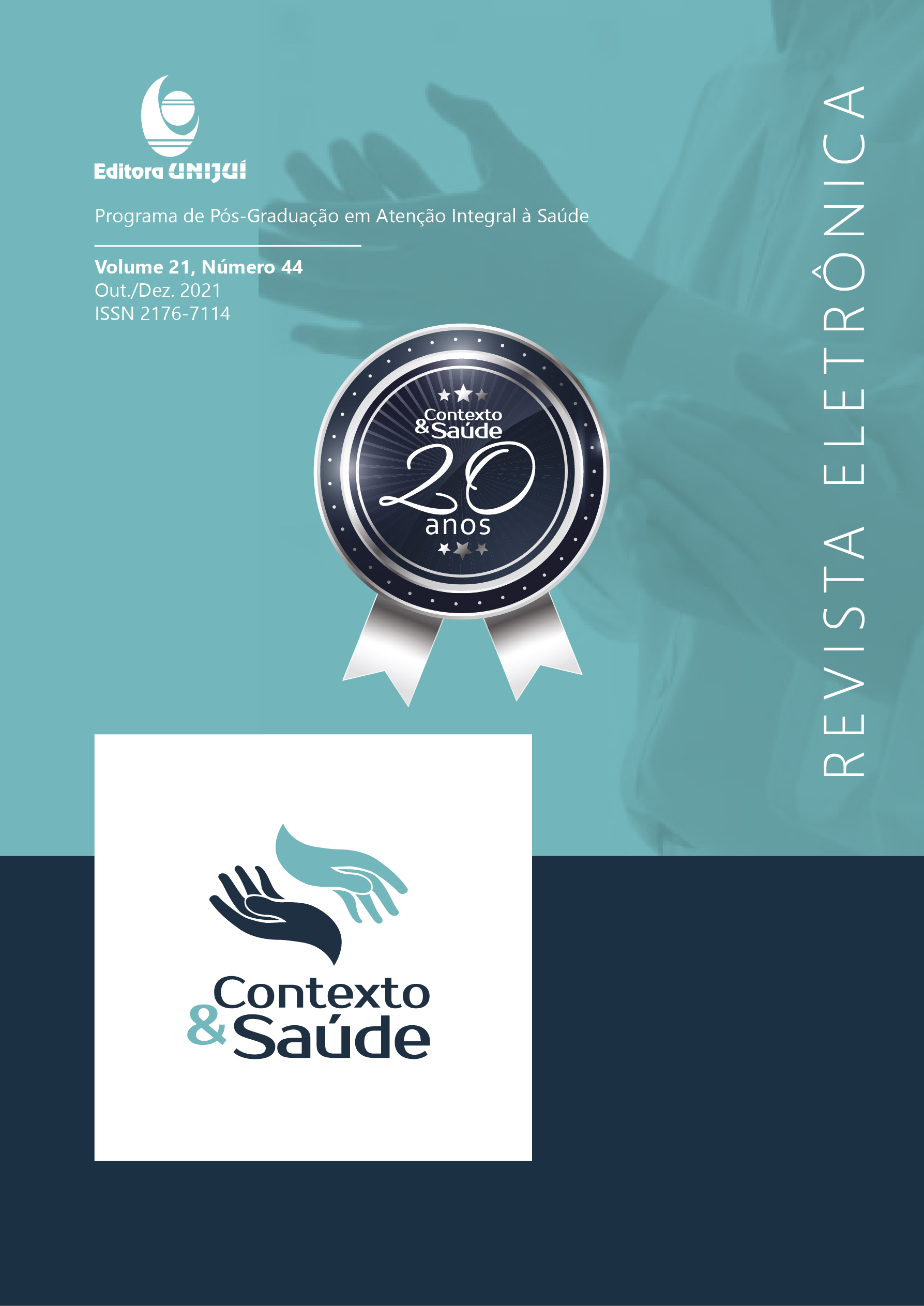URINARY INCONTINENCE AND BODY IMAGE IN HIGH-RISK AND USUAL RISK PREGNANT WOMEN
INCONTINÊNCIA URINÁRIA E AUTOIMAGEM CORPORAL EM GESTANTES DE ALTO RISCO E RISCO HABITUAL
DOI:
https://doi.org/10.21527/2176-7114.2021.44.11562Palabras clave:
Urinary Incontinence, body image, pregnancyResumen
Pregnancy can be defined as a period of approximately 40 weeks, in which physiological and mechanic adaptations occur, along with strong psychological modifications. Being a moment of vulnerability, it can be negatively influenced by factors such as urinary incontinence (UI), high-risk pregnancy or even a negative body image. Thus, the aim of this study was to compare body image and the occurrence of urinary incontinence in high-risk and usual risk pregnant women. An observational study with a quantitative and cross-sectional approach was conducted to evaluate the occurrence of urinary incontinence and body image of pregnant women. The sample was divided into two groups: high-risk (n=34) and usual risk (n=31) pregnant women. For the data collection, an identification file was applied, collecting data such as obstetric history, followed by the International Consultation on Incontinence Questionnaire - Short Form (ICIQ-SF), and the Body Image Measurement Scale (BIMS). It was observed that both groups were dissatisfied with body image, and urinary incontinence occurrence was moderately above to what is found in literature. No relationship between urinary incontinence and body satisfaction was observed in either group. There was no relationship between urinary incontinence and body image. The pregnant women from both groups presented dissatisfaction regarding body image, and the occurrence of urinary incontinence was slightly higher than that observed in literature (50% of occurrence according to national estimates, especially during pregnancy and puerperium).
Descargas
Publicado
Cómo citar
Número
Sección
Licencia

Esta obra está bajo una licencia internacional Creative Commons Atribución 4.0.
Ao publicar na Revista Contexto & Saúde, os autores concordam com os seguintes termos:
Os trabalhos seguem a licença Creative Commons Atribuição 4.0 Internacional (CC BY 4.0), que permite:
Compartilhar — copiar e redistribuir o material em qualquer meio ou formato;
Adaptar — remixar, transformar e criar a partir do material para qualquer fim, inclusive comercial.
Essas permissões são irrevogáveis, desde que respeitados os seguintes termos:
Atribuição — os autores devem ser devidamente creditados, com link para a licença e indicação de eventuais alterações realizadas.
Sem restrições adicionais — não podem ser aplicadas condições legais ou tecnológicas que restrinjam o uso permitido pela licença.
Avisos:
A licença não se aplica a elementos em domínio público ou cobertos por exceções legais.
A licença não garante todos os direitos necessários para usos específicos (ex.: direitos de imagem, privacidade ou morais).
A revista não se responsabiliza pelas opiniões expressas nos artigos, que são de exclusiva responsabilidade dos autores. O Editor, com o apoio do Comitê Editorial, reserva-se o direito de sugerir ou solicitar modificações quando necessário.
Somente serão aceitos artigos científicos originais, com resultados de pesquisas de interesse que não tenham sido publicados nem submetidos simultaneamente a outro periódico com o mesmo objetivo.
A menção a marcas comerciais ou produtos específicos destina-se apenas à identificação, sem qualquer vínculo promocional por parte dos autores ou da revista.
Contrato de Licença (para artigos publicados a partir de setembro/2025): Os autores mantém os direitos autorais sobre seu artigo, e concedem à Revista Contexto & Saúde o direito de primeira publicação.

